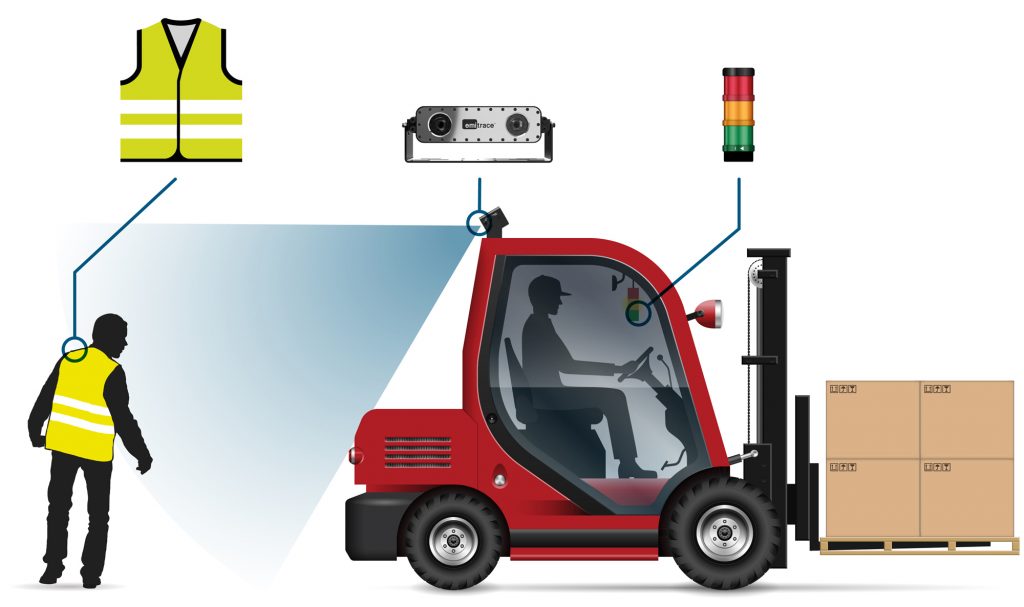September 18, 2019 – Swedish startup Retenua has developed the first fully integrated advanced driver-assistance system (ADAS) for detecting people around industrial vehicles and forklifts, basing it on a Vision Components embedded camera. This is also the first system trained to detect reflective workwear and using an NIR flash. The patented technology significantly increases occupational safety, providing reliable detection both in the dark and in bright sunlight. The team collaborated on the development with companies from the mining and logistics sectors. In addition, the new ADAS is also suitable for landfills and any other application fields where the viewing angle for drivers is limited and people are equipped with reflective clothing. Designed as an embedded system, the ADAS is particularly compact and robust. The integrated VC Z stereo camera from Vision Components detects reflectors, calculates the 3D position and speed of people, and triggers an alarm, if an accident threatens. The board camera features two remote sensor boards, a flash trigger interface, a 1-Gbit Ethernet interface, and an onboard Xilinx Zynq SoC that handles the entire image processing routines. The Linux operating system and software libraries provided by Vision Components made the software development easier for Retenua.
The ADAS is marketed in all of Europe under the name emitrace. The completely novel solution has clear advantages over existing sensor and camera systems, which all have particular weaknesses. Lidar, radar, and ultrasound often have difficulties distinguishing people and objects – many false alarms disqualify them in the industrial environment. RFID technology handles this particular challenge very well, but, depending on the number of vehicles and people who need to be equipped with transponders and receivers, the costs can amount to a very high sum. Previously existing camera solutions identify people based on the silhouette and only function reliably with an upright posture. The algorithms are still a long way from detecting, for example, an unconscious or injured person who is lying on the ground in real time. emitrace, which detects the reflectors on high-visibility clothing, is the only system that works reliably regardless of light conditions and people's postures. Unlike existing camera-based products, emitrace does not require an additional image-processing computer. It is therefore also a particularly low-maintenance and cost-effective solution.
About Vision Components
Vision Components is a leading international manufacturer of embedded vision systems. The freely programmable cameras with powerful onboard CPUs perform image processing tasks on their own without the need for an additional computer. Vision Components offers OEMs versatile Linux-based embedded systems for 2D and 3D image processing, supplied as board cameras or in protective casings. These are complemented by a growing range of ultracompact MIPI camera boards, which connect to a variety of different CPU boards. In addition, Vision Components offers software libraries and develops customized solutions on request.
The team of experts can draw on extensive knowledge and over 20 years of experience with imaging applications. The company based in Ettlingen in southwestern Germany was founded in 1996 by Michael Engel, the inventor of the first industrial-grade intelligent camera. More world premieres followed, including the world's first intelligent vision sensors and the first-ever embedded 3D laser profiler. Today, Vision Components has sales offices in the United States and Japan and works with local partners in over 25 countries to provide consistent customer focus and readily available expertise throughout the world.


